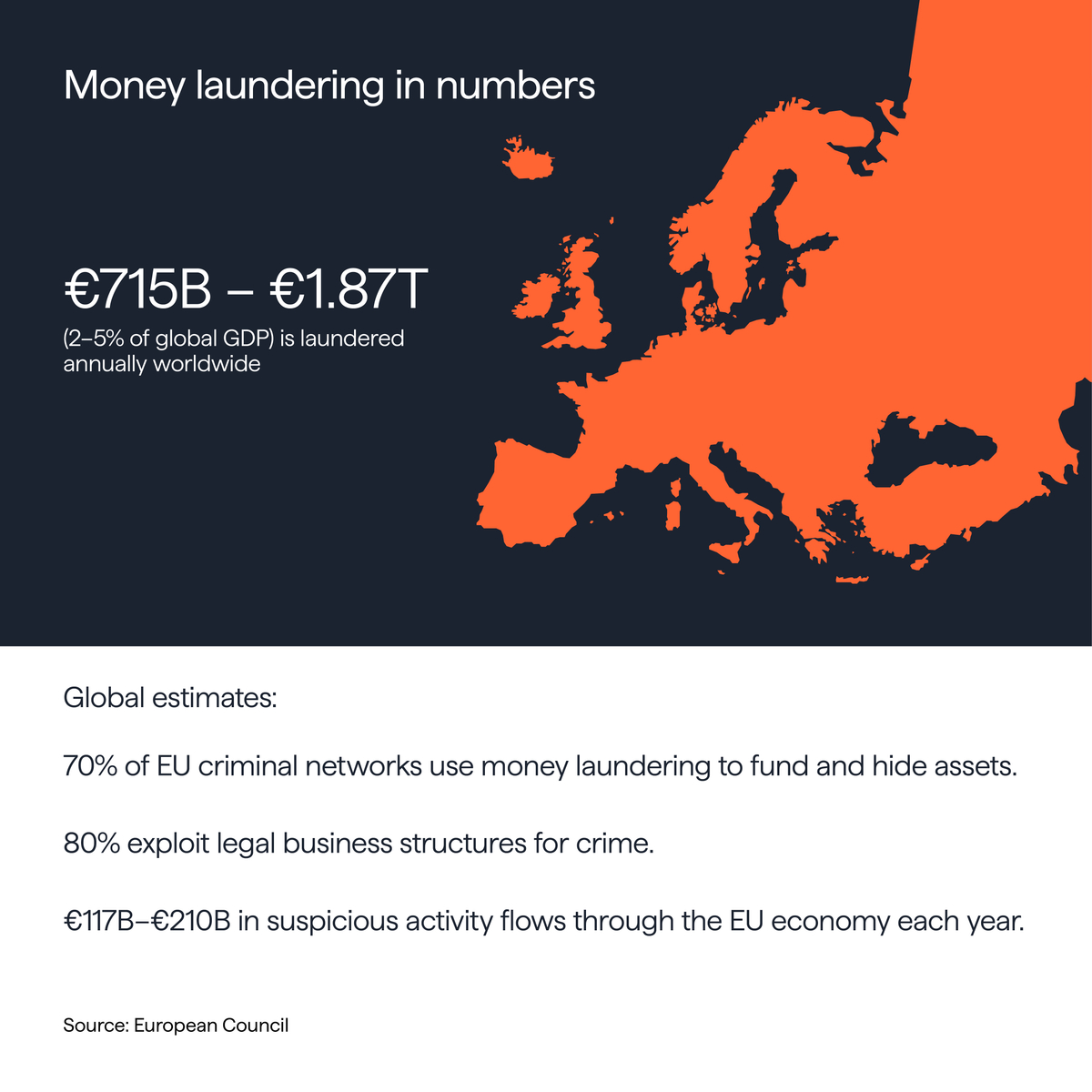Anti-Money Laundering Directive (AMLD)
The Anti-Money Laundering Directive, or AMLD, is the series of European Union directives that set out the rules financial institutions and certain non-financial businesses must follow to help stop money laundering and terrorist financing.
Put more simply, it is the EU’s rulebook that tells banks, fintechs, and other businesses what checks and procedures they need in place to keep criminals from hiding illicit money in the financial system.
Alongside customer verification and transaction monitoring, the directives also lay down obligations on transparency, record keeping, and cooperation with regulators.
The first directive was adopted in 1991, focusing mainly on drug trafficking proceeds. It was revised in 2001 and 2005 to address new risks and bring EU law closer in line with global standards set by the Financial Action Task Force (FATF).
Key updates:
- 4th AMLD (2015): Introduced a risk-based approach and required EU countries to set up central registers of beneficial ownership. Credit and financial institutions had to pay closer attention to higher-risk customers and regulators gained more visibility over who really owns companies and trusts.
- 5th AMLD (2018): Expanded the scope to virtual currencies and prepaid cards, tightened rules for high-risk third countries, and made beneficial ownership registers more accessible to the public.
- 6th AMLD (2021): Harmonized the definition of money laundering offenses across the EU, imposed tougher criminal penalties, and clarified the list of predicate offenses, such as tax crimes, that can give rise to money laundering charges.
- Future package: A new set of AML rules is in development, including the creation of a single EU Anti-Money Laundering Authority (AMLA) to ensure consistent supervision across member states.
How AMLD supervision works in the EU and Germany
The European Central Bank (ECB) and national authorities work together to make sure anti-money laundering rules are applied properly across the EU. The ECB plays a key role in sharing information between countries, helping authorities track and prevent cross-border money laundering and terrorist financing.
While the ECB can spot potential violations of the EU’s Money Laundering Directive, it cannot directly impose penalties. Instead, it can request national supervisory authorities to take action and enforce sanctions.
In Germany, several agencies are responsible for monitoring compliance. The most important are the Federal Financial Supervisory Authority (BaFin) and the Financial Intelligence Unit (FIU).
Any suspicious transactions or activity must be reported to the FIU. Since the adoption of AMLD6, supervision now also covers non-financial sectors, such as real estate, which means other government authorities also play a role in enforcement.
Interesting facts

Banks and other businesses are committed to meeting these directives, recognizing that compliance not only strengthens trust but also protects the financial system. While it requires investment, regulators highlight that these efforts are vital to reducing financial crime across Europe.
You might have noticed your bank asking more detailed questions about where your funds come from or why you are making a certain transaction. That is AMLD at work.
The AMLD has also had a major influence outside the EU. Many non-EU countries, including those in the European Economic Area and candidate countries, have aligned their frameworks with EU rules, creating a more consistent approach to fighting money laundering globally.
Further reading
- The EU Commission’s Anti-Money Laundering Policy page provides official texts, guidance, and updates.
- FATF publishes regular recommendations and mutual evaluation reports that underpin many AMLD provisions.